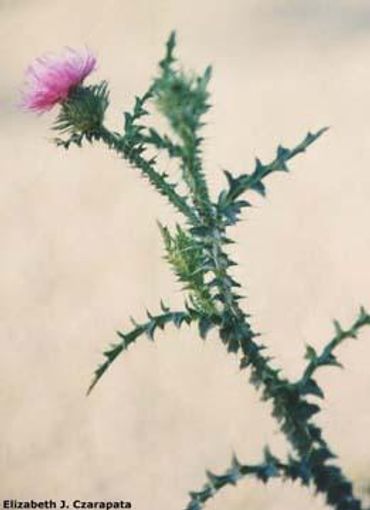PLumeless Thistle






Details and Information
Common Names
Spiny plumeless thistle
Description
Plumeless thistle is a winter annual or a biennial plant that originated from Eurasia. This plant tends to be shorter than any other invasive thistles and can generally reach 1 to 4 feet tall. The first year Plumeless thistle does not bloom, but when it flowers it shows a spiny winged stems that completely extend up and down the stem unlike Musk thistle. The stems are winged and more branched that gives the plant and candelabrum appearance. The flowers are small and range from .5-1 inch in diameter but very numerous and pink to purple in color or very rarely white-yellowish. The bracts beneath the flowers are very narrow and resemble spines. The heads can be singular or in cluster of 2 to 5. This plant flowers from May to August. Plumeless thistle can become very weedy and form dense colonies.
Key Features
Plumeless thistle rosettes have wavy leaves with yellow spines along with white-colored leaf margins. Has a taproot and the seeds are inside the spiny flowers.
Habitat
Plumeless thistle can be found in cultivated fields, pastures, right-of-ways, rangeland, and non-cropped areas.
Control
There are herbicides and other control methods that commonly control plumeless thistle. Hand pulling and digging can be effective if done before the plant flowers - dig below the growing point or pull by the roots. Herbicides include Tordon, Milestone, Escort, 2,4-D and Dicamba. For more information on these herbicides and other control methods contact the Weed and Pest office.
Other Facts
Plumeless thistle is an important plant for the butterflies and the seeds are eaten by numerous species of songbirds. It may accumulate nitrates, but is unpalatable to livestock so they will not get poisoned by this plant.
Cookie Policy
This website uses cookies. By continuing to use this site, you accept our use of cookies.